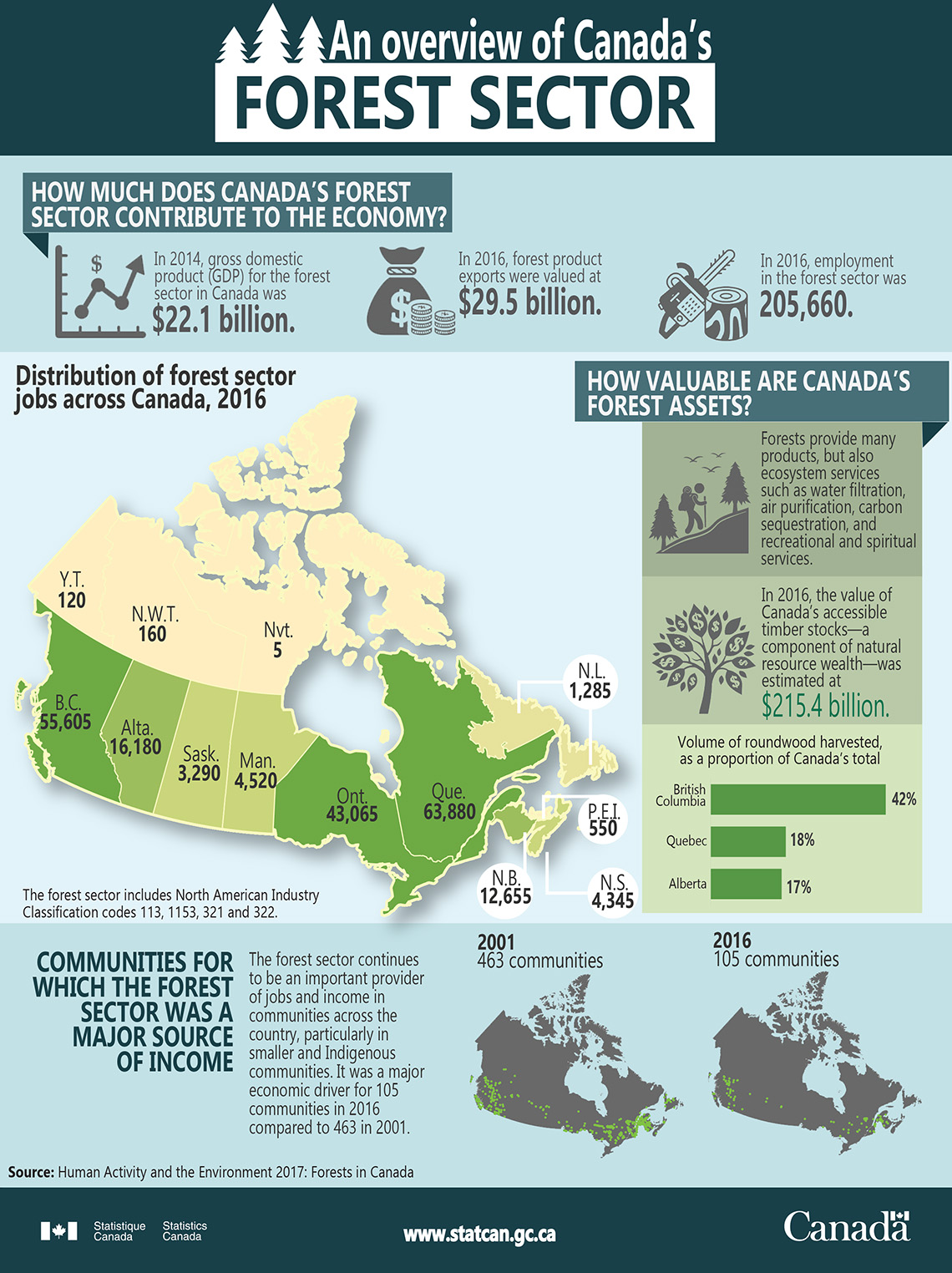An overview of Canada's forest sector
Archived Content
Information identified as archived is provided for reference, research or recordkeeping purposes. It is not subject to the Government of Canada Web Standards and has not been altered or updated since it was archived. Please "contact us" to request a format other than those available.

Description: An overview of Canada's forest sector
It includes multiple components including maps, graphs, pictographs and facts about the forest sector.
Text on the infographic, as well as bar chart and map data are as follows:
How much does Canada's forest sector contribute to the economy?
In 2014, gross domestic product (GDP) for the forest sector in Canada was $22.1 billion.
In 2016, forest product exports were valued at $29.5 billion.
In 2016, employment in the forest sector was 205,660.
Distribution of forest sector jobs across Canada, 2016
A map indicates the distribution of forest sector jobs:
- Newfoundland and Labrador 1,285
- Prince Edward Island 550
- Nova Scotia 4,345
- New Brunswick 12,655
- Quebec 63,880
- Ontario 43,065
- Manitoba 4,520
- Saskatchewan 3,290
- Alberta 16,180
- British Columbia 55,605
- Yukon Territory 120
- Northwest Territories 160
- Nunavut 5
The forest sector includes North American Industry Classification codes 113, 1153, 321 and 322.
How valuable are Canada's forest assets?
Forests provide many products, but also ecosystem services such as water filtration, air purification, carbon sequestration, and recreational and spiritual services.
In 2016, the value of Canada's accessible timber stocks—a component of natural resource wealth—was estimated at $215.4 billion.
Volume of roundwood harvested, 2015, as a proportion of Canada's total: 42% in British Columbia, 18% in Quebec, 17% in Alberta.
Communities for which the forest sector was a major source of income
The forest sector continues to be an important provider of jobs and income in communities across the country, particularly in smaller and Indigenous communities. It was a major economic driver for 105 communities in 2016 compared to 463 in 2001.
Two small maps indicate the geographic location of these communities.
Source: Human Activity and the Environment 2017: Forests in Canada
- Date modified:
